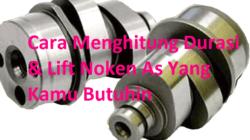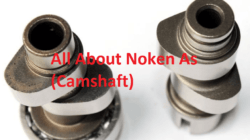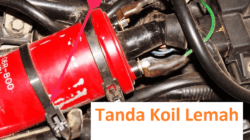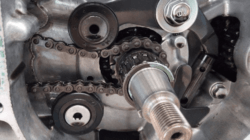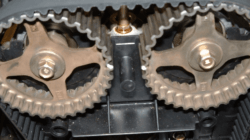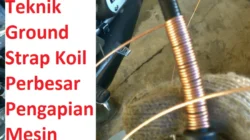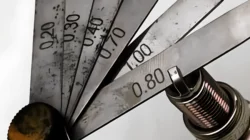A damaged or broken timing belt can cause severe engine problems. It’s not just about vehicle performance being disturbed, but it also poses a risk of severe engine damage, potentially leading to total engine failure. Therefore, it’s essential to understand the symptoms or signs of a damaged timing belt before it’s too late.
Many car owners don’t realize that the signs of a damaged timing belt can appear long before the belt actually breaks. Unfortunately, damage to this component often occurs without any noticeable sound or obvious signs. Recognizing the signs of a damaged or broken timing belt early can save you from expensive engine repair costs.
Daftar Isi:
- What is a Timing Belt and Why is it Important?
- Why Do Timing Belts Break or Get Damaged?
- Consequences of a Broken Timing Belt on the Car Engine
- Signs of a Damaged or Broken Timing Belt to Watch Out For
- How to Maintain Your Timing Belt to Prevent Premature Damage
- The Importance of Not Ignoring the Signs of a Damaged Timing Belt
What is a Timing Belt and Why is it Important?
A timing belt is a rubber toothed belt that connects the crankshaft to the camshaft. Its primary function is to synchronize the rotation of these two components so that the valves and pistons operate in harmony. If the timing belt isn’t functioning properly, the entire engine cycle will be disrupted.
Generally, a timing belt has a lifespan of around 60,000 to 100,000 kilometers, depending on the manufacturer’s recommendations. However, road conditions, driving habits, and improper maintenance can shorten its lifespan.
Most manufacturers recommend changing the timing belt every 60,000 kilometers, while some claim it can last up to 100,000 kilometers. Therefore, it’s important to read the vehicle’s maintenance manual. However, most recommend replacing the timing belt at 60,000 kilometers and inspecting it at 30,000–40,000 kilometers. If cracks are found on the belt at this point, it should be replaced immediately as it’s one of the signs that the timing belt is damaged and could risk severe engine damage.
Why Do Timing Belts Break or Get Damaged?
Timing belts can break or get damaged due to various factors, such as age, extreme engine temperatures, oil leakage on the belt, or poor-quality components. If the belt becomes brittle, cracked, or worn, the risk of it breaking increases.
In addition, supporting components like the tensioner and pulley must also be in optimal condition. Strange sounds often originate from damage to the tensioner bearings, not from the timing belt itself.
Consequences of a Broken Timing Belt on the Car Engine
If the timing belt breaks while the engine is running, the consequences can be severe. The pistons and valves may collide because they are no longer synchronized. This can cause:
- Bent valves
- Holes in pistons
- Bent piston rods
- Broken rocker arms (valve plates)
In some cars, such as the Suzuki Carry ST100 and Carry Futura, this fatal damage may not occur. However, for most modern vehicles, the effects of a broken timing belt are serious.
Signs of a Damaged or Broken Timing Belt to Watch Out For
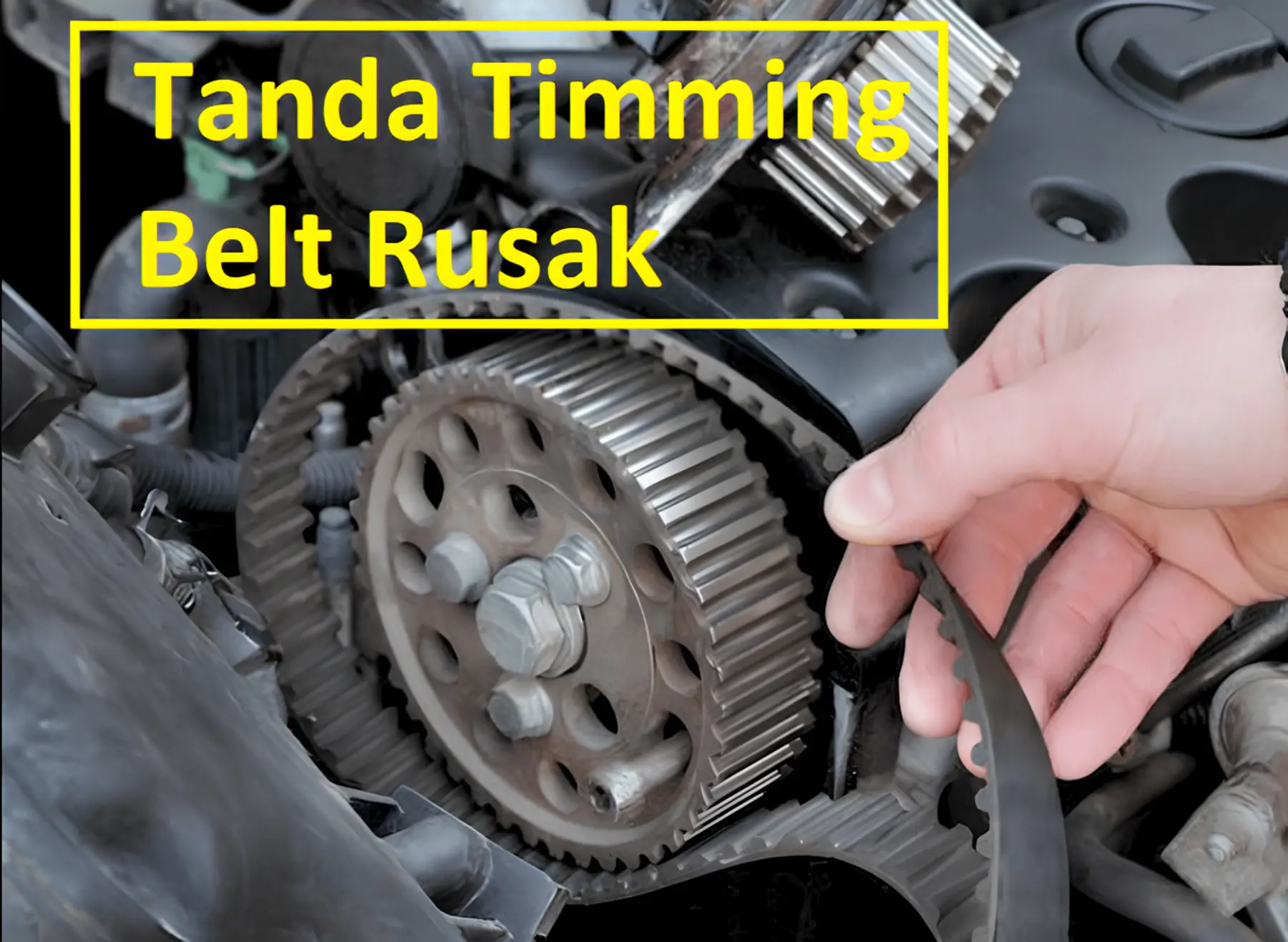
A broken timing belt risks a collision between the valves and pistons. This can result in bent valves, holes in pistons, bent piston rods, and broken rocker arms. From my experience, there are certain types of cars that don’t suffer damage due to a collision between the valves and pistons when the timing belt breaks, such as the Suzuki Carry (ST 100) and Carry Futura.
It’s important to note that a problematic timing belt won’t produce strange sounds unless there’s damage to the tensioner bearing. So, don’t ignore regular maintenance on the timing belt if you don’t want your engine to suffer severe damage.
Here are some common signs of a damaged or broken timing belt that are often unnoticed:
- Cracks or Brittleness on the Timing Belt Surface If you notice small cracks or the belt surface starts to become brittle, it’s a sign that the timing belt needs to be replaced. This is typically discovered during routine inspections at 30,000–40,000 kilometers.
- Decreased Engine Performance If the engine feels weak, has trouble accelerating, or seems to “stall,” it could be an indication that the timing belt is starting to wear out or skip teeth.
- Difficulty Starting the Engine A loose or misaligned timing belt can cause improper ignition timing, making the engine harder to start.
- Engine Stalls Suddenly While Driving This could be a sign that the timing belt has broken. If this happens, immediately turn off the engine and do not attempt to restart it.
How to Maintain Your Timing Belt to Prevent Premature Damage
- Perform Regular Inspections According to the Manual Every manufacturer has recommended replacement intervals. Typically, the timing belt is checked at 40,000 kilometers and replaced at 60,000–100,000 kilometers.
- Avoid Oil Leaks on the Timing Belt Oil leaks can make the belt slippery and speed up its deterioration. Fix any leaks in the cylinder head or timing belt cover promptly.
- Replace the Tensioner and Pulley Together When replacing the timing belt, it’s advisable to replace the tensioner and pulley as well to avoid abnormal noises and friction that could accelerate wear.
- Note and Set Reminders for Replacement Schedule Since the replacement interval is quite long, make sure to note it in your service book, rearview mirror, or set reminders on your phone for when the timing belt was last replaced.
The Importance of Not Ignoring the Signs of a Damaged Timing Belt
Timing belts don’t make noise when they’re worn out, unlike fan belts or v-belts. Therefore, don’t rely solely on sound as an indicator. Regular maintenance is the only way to detect the condition of the timing belt before it completely breaks down.
The signs of a damaged or broken timing belt may not be easy to spot without a physical inspection. However, the damage can have serious consequences on the performance and safety of your vehicle. Don’t wait until your engine fails! Perform regular inspections and replace the timing belt according to the manufacturer’s schedule. Proper maintenance today can save you from costly repairs tomorrow.

